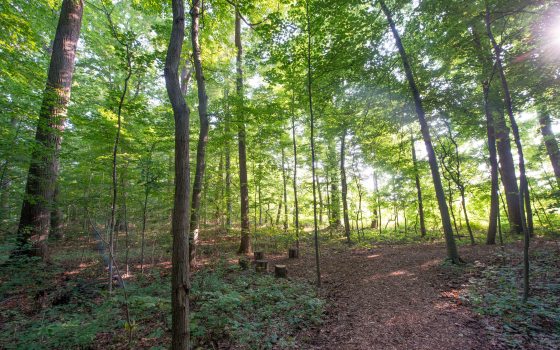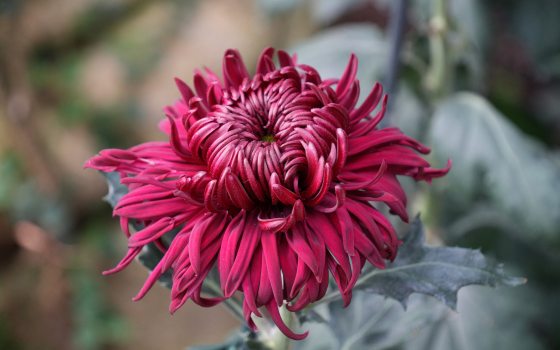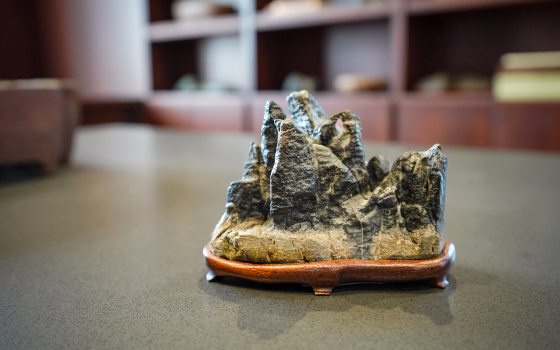From shaded woodland paths to sunny wildflower-lined trails, our Gardens provide perfect spots for relaxed strolls as well as more energetic treks. Take a peek at just a few of our welcoming walking trails below and discover much more with a visit to our Gardens.
Forest Walk
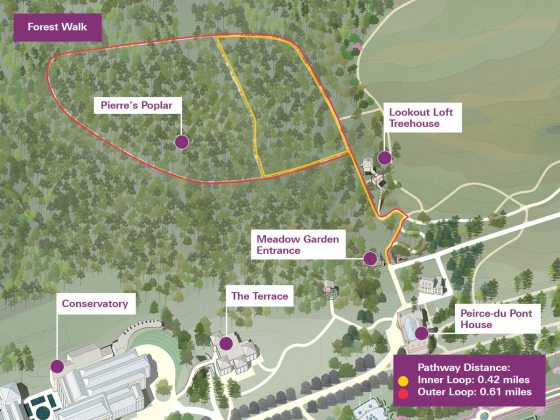
One of Longwood’s most tranquil gardens, Forest Walk is an approximately 180-year-old tulip-poplar and sugar maple forest, that also contains other tree species such as American beech, and various hickories. Walk its shaded woodland path, and view a variety of bird species year-round, as well as spectacular fall foliage, falling snow in winter, fresh green leaves in spring, and a cool tree canopy during a warm summer day. Don’t forget to look up (way up!) while you explore this space, as it’s home to the massive tulip-poplar (Liriodendron tulipifera) we’ve named “Pierre’s Poplar.” Situated in a valley right off the trail that bisects the middle of the forest, Pierre’s Poplar measures in at 164 feet tall, making it the tallest measured Liriodendron in the northeastern United States.
Pathway distance
- Outer loop: 0.61 miles
- Inner loop: 0.42 miles
Distance from Visitor Center
- 0.25 miles (approximate 8-minute walk)
Trail terrain
- Wood chip path with a few slight inclines
Habitat
- Tulip-poplar and sugar maple forest
Wildlife
- Variety of birds, red fox, gray squirrel, white-tailed deer
Points of interest
- Lookout Loft Treehouse, Pierre’s Poplar
Shade conditions
- Full shade

Glimpses of sunshine lead the way along Forest Walk. Photo by William Hill.
Located along the edge of Forest Walk is the tranquil Lookout Loft Treehouse, a rustic Adirondack-style structure that serves as the perfect rest point and features a 360-degree raised view of the forest canopy. Take a breath and connect with nature or listen to the sounds of the surrounding forest, aided by the treehouse’s handcrafted copper sound horns. Look for the many types of birds that frequent this garden, such as red-bellied woodpeckers, blue jays, and scarlet tanagers.
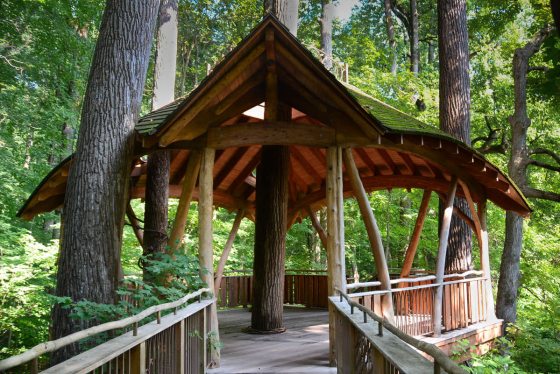
The serene Lookout Loft Treehouse serves as a quiet respite along Forest Walk. Photo by Judy Czeiner.
Hillside Garden
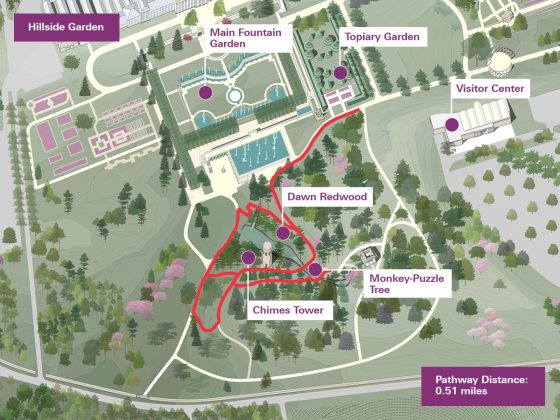
Created as part of a man-made hillside between 1929 and 1932 during the Main Fountain Garden excavation and developed over the years, the vibrant Hillside Garden and its paths, stairs, and stone landings, serves as a source of inspiration for home gardeners with its textural fabric of plantings and colors. The sun-drenched north end of the Hillside Garden peaks in late summer and fall and was designed to emulate a slice of prairie or open meadow and beams with pollinators and wildlife of all sorts, including goldfinches, ruby-throated hummingbirds, and monarch butterflies. In fact, we made a special effort to attract monarchs by selecting and planting almost 200 milkweed (Asclepius) plants of various species to attract caterpillars. The shaded south end of the Hillside Garden offers more springtime interest when ephemerals and bulbs of all kinds can be best enjoyed. The rest of the year, the south end is a cool, peaceful retreat full of woodland plants from around the world.
Pathway distance
- 0.51 miles
Distance from Visitor Center
- 0.2 miles (approximate 6-minute walk)
Trail terrain
- Paved pathways with stairs and landings
Habitat
- Trees, shrubs, and herbaceous perennials
- North end: Prairie, open meadow concept
- South end: Woodland
Wildlife
- Goldfinches, ruby-throated hummingbirds, monarch butterflies, variety of pollinators
Points of interest
- North end: Waterfalls, scenic overlooks, Japanese crape-myrtle (Lagerstroemia subcostata var. fauriei ‘Townhouse’), monkey-puzzle tree (Araucaria araucana), golden-larch (Pseudolarix amabilis)
- Hosta ‘Honeybells’, wheel-tree (Trochodendron aralioides), dawn redwood (Metasequoia glyptostroboides ‘Ogon’), Umbrella-pine (Sciadopitys verticillata)
Shade conditions
- North end: Part sun, part shade
- South end: Shaded

Morning light illuminates the Hillside Garden’s pathways. Photo by Carol DeGuiseppi.
Explore the Hillside Garden’s pathways and discover the cascading water features that provide a pleasant soundtrack for this multi-faceted garden.

This dawn redwood (Metasequoia glyptostroboides ‘Ogon’), once thought to be extinct, serves as a fantastic focal point in the Hillside Garden. Photo by Bryan Kottke.
Oak and Conifer Knoll
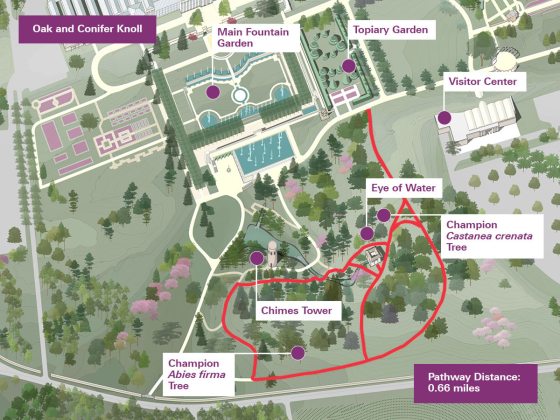
Towering trees welcome guests to Oak and Conifer Knoll, a mostly shaded vista set within easy reach of the Hillside Garden and Main Fountain Garden. This garden’s paved pathways and gentle slopes wind past its Pennsylvania champion trees. Its open forest habitat lacks the typical understory elements, providing for an unobstructed view of the mature specimens of majestic evergreens that dominate its peaceful landscape. Here you’ll find the Eye of Water, a modern water feature that sits above the nearby 50-foot Chimes Waterfall.
Pathway distance
- 0.66 miles
Distance from Visitor Center
- 0.25 miles (approximate 8-minute walk)
Trail terrain
- Paved, gently sloped
Habitat
- Open forest of mature evergreens and oaks
Wildlife
- Gray squirrels, rabbits, white-tailed deer, pileated woodpeckers, red-tailed hawks, broad shoulder hawks
Points of interest
- Champion Momi fir (Abies firma) and Japanese chestnut (Castanea crenata) trees, Eye of Water
Shade conditions
- Part sun, part shade
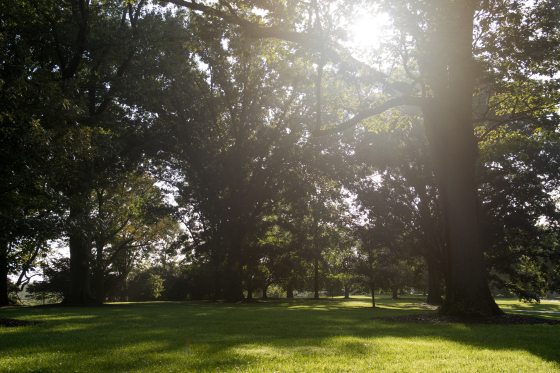
Mighty oaks stand along Oak and Conifer Knoll. Photo by Casey Orlosky.
While strolling through Oak and Conifer Knoll, look for red-tailed and broad shoulder hawks, who often perch at the tops of the trees. Pileated woodpeckers also frequent this garden and are recognizable by their punctuated flight pattern.
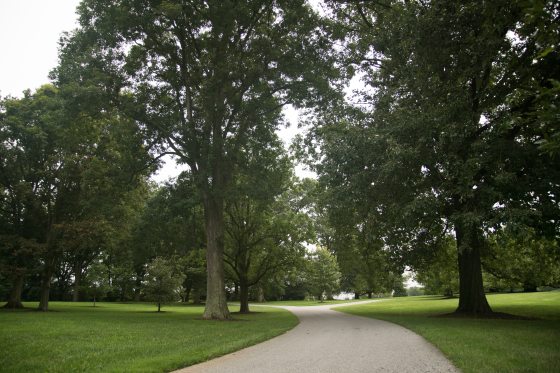
Known for their size and longevity, oak trees provide pleasant shade during a late summer stroll. Photo by Casey Orlosky.
Meadow Garden
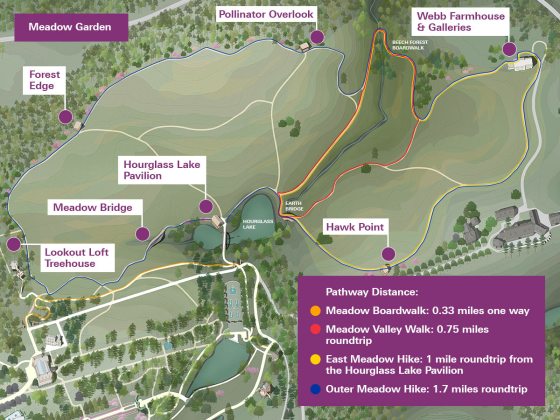
Spanning 86 acres and three miles of walking and hiking trails, the Meadow Garden is a shining example of best practices in ecological garden design. This managed meadow is an ever-changing garden that stuns all year round, with native wildflowers in summer and fall, snowy winter vistas, and reawakened sweeps of color starting in spring. Undulating fields, lush wetlands, and more diverse habitats await in the Meadow Garden’s layered terrain. Broad vistas, four bridges, the historic Webb Farmhouse & Galleries, and four learning pavilions are just a few of this sprawling garden’s highlights.
You’ll find many walking and hiking adventures to experience in the Meadow Garden, including the fully accessible Meadow Boardwalk, which offers a variety of views from the comfort of a partially shaded, elevated boardwalk and crushed granite path; the serene Meadow Valley Walk past an old quarry and spring house, among other features; the East Meadow Hike to Hawk Point, an ideal vista for bird viewing; and the all-encompassing Outer Meadow Hike that winds along the outer edges of the Meadow Garden with panoramic views, quiet corners for contemplation, and stops at all the learning pavilions, Webb Farmhouse, and much more.
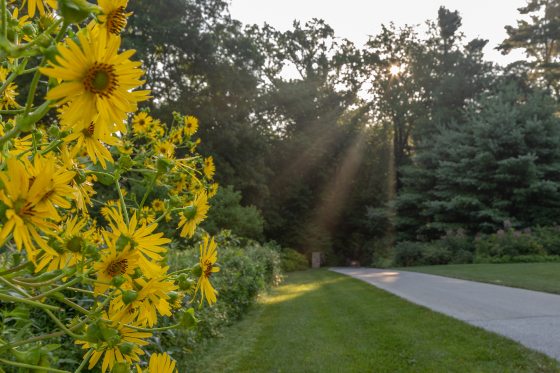
Sunny cup-plant (Silphium perfoliatum) welcomes summer hikers to the ever-changing Meadow Garden. Photo by Carol DeGuiseppi.
Pathway distance
- Meadow Boardwalk: 0.33 miles one way
- Meadow Valley Walk: 0.75 miles roundtrip
- East Meadow Hike: 1 mile roundtrip from the Hourglass Lake Pavilion
- Outer Meadow Hike: 1.7 miles roundtrip
Distance from Visitor Center
- 0.5 miles (approximate 15-minute walk)
Trail terrain
- Meadow Boardwalk: Fully accessible elevated boardwalk and crushed granite path with gentle grade
- Meadow Valley Walk: Nearly flat with grass paths and boardwalk
- East Meadow Hike: Varied terrain with uneven grass trails that slope upwards with a moderate incline to the Webb Farmhouse and back down toward the creek and roadbed
- Outer Meadow Hike: Primarily uneven grass trails with varied terrain, short boardwalk sections, bridge crossings, rolling hills, some steep areas
Habitat
- Meadow Boardwalk: Woodland edge, meadow edge, wetlands, ponds
- Meadow Valley Walk: Creek, wetlands, large specimen white oaks
- East Meadow Hike: Dry and wet meadow, wetlands, forest, large specimen white oaks
- Outer Meadow Hike: Dry and wet meadow, wetlands, forest edge
Wildlife
- Dragonflies, turtles, ducks, egrets, herons, white-tailed deer, red foxes, wild turkeys, Accipiter hawks, Buteo hawks, harrier hawks, beavers, monarch butterflies, Eastern swallowtail butterflies, tree swallows, chickadees, wrens, bluebirds
Points of interest
- Meadow Bridge, Hourglass Lake, Hourglass Lake Bridge, Hourglass Lake Pavilion, Hawk Point, Earth Bridge, Webb Farmhouse & Galleries, Beech Forest Boardwalk, Forest Edge Learning Pavilion, Pollinator Overlook
Shade conditions
- Meadow Boardwalk: Part shade
- Meadow Valley Walk: Full sun
- East Meadow Hike: Full sun
- Outer Meadow Hike: Full sun with partial shade along Beech Boardwalk
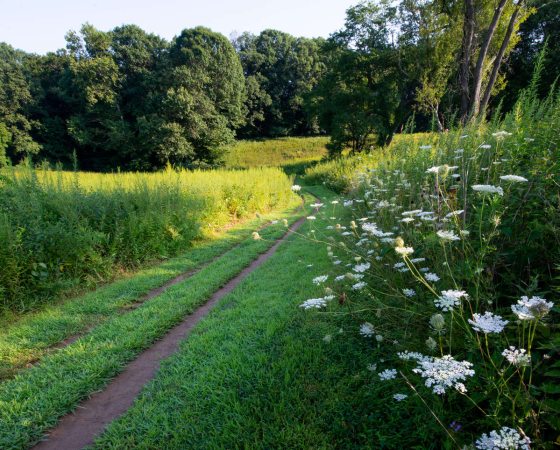
The delicate white flowers of white carrot (Daucus carota) add a sprinkle of color to the Meadow Garden’s sloped terrain. Photo by William Hill.
Our Forest Walk, Hillside Garden, Oak and Conifer Knoll, and Meadow Garden are all wonderful places for a late summer leisurely stroll or an extensive hike, but you’ll find along the way that all of our gardens provide for a fantastic walking experience.
Gardens Perimeter Loop
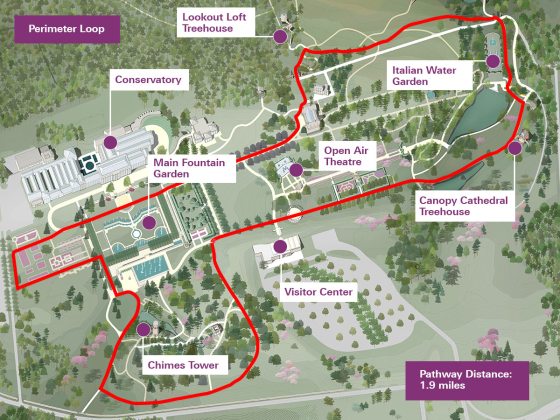
If you’re looking to see a large area of our Gardens with many highlights along the way, take the Gardens loop around the Longwood perimeter. To start your loop, once you walk through the Visitor Center tunnel, take a right to walk down Flower Garden Drive. Amble past the Small Lake and Large Lake and look to your right for our Canopy Cathedral Treehouse, an ornate two-story structure inspired by a Norwegian church. Either climb the treehouse stairs for a sweeping view of the Large Lake, or continue past the Italian Water Garden, onto the Meadow Boardwalk. Pass by the historic Peirce-du Pont House, with a look to your right at our towering Birdhouse Treehouse, and walk along the northern end of our sprawling Cow Lot—so named as it was once a pasture—before heading past the Topiary Garden on your left, followed by our spectacular Main Fountain Garden also on your left. Pause to take in the splendor of this performance garden before looping past the ever-changing Idea Garden and Chimes Tower and Waterfall, and then through Oak and Conifer Knoll. You’ll find yourself along the southern end of the Cow Lot, headed back down towards the Visitor Center on your right.
Total pathway distance
1.9 miles
Terrain
Primarily paved pathways
Whether embarking on a hike in our Meadow Garden, strolling through our shaded Forest Walk, or making the Gardens Perimeter Loop, every visit to our Gardens leads to new discoveries and new beauty to behold.
